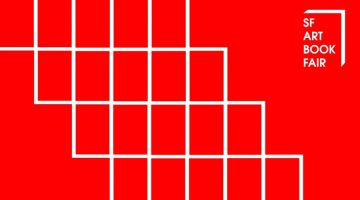
‘Forrest Floor, Danse Macabre’ 2013 – gouache and flower essence of sorrel, trillium, figwort, mint, fern and wild ginger on paper. Courtesy of the gallery.
Currently at Park Life, San Francisco is “Hagazussa”, a solo exhibition of new paintings by Rachel Budde. In this her current exhibition Rachel Budde explores the boundary or the ‘hedge’ in her new body of work.
Hedge, hex and hag all have their roots in the Germanic word “hagazussa”. Hagazussa implies a certain malevolent/benevolent magic on the boundary where the wild and the cultivated meet. This edge is illuminated by her work, embodied in her trickster goddesses manifesting in various forms from medicinal weeds, to potholes to windows into the void. Working with weeds as a manifestation of her trickster force, these self-seeding, medicinal herbs thrive in our urban environments, often harboring medicinal properties which address common ailments in urban environments. She imagines the weeds fertility coming from an insatiable sexual appetite. Through her own visual mythology, she presents the trickster Goddess, ever straddling the cleaved boundaries that betray the illusion of our binary world.
Rachel Budde infuses the cliche of the Earth Goddess with more sinister and unpredictable dimensions as reflected in the Cheshire grin of the Trickster to re-envision the earth goddess in a more active, if not paradoxical, role. The false dichotomy disconnecting Culture from Nature creates a fetishized relationship to the latter. Refashioning the contemporary vision of the natural world allows her to rethink our own natures. The Earth Goddess is not just a symbol of fertility. We’ve been trained to see only this in forms like the Venus of Willendorf: passive, ever fertile and ready to conceive. Just as importantly as her power of procreation, the Goddess wields wrath and destruction. The narrative of her productive womb is advantageous in a patriarchal society. But she is also the consumptive tornado, the scorching volcanic shower, the hedonistic sexual pulse that propels life forward.
This exhibition is on view until September 8th, 2013.
For more information visit here.





